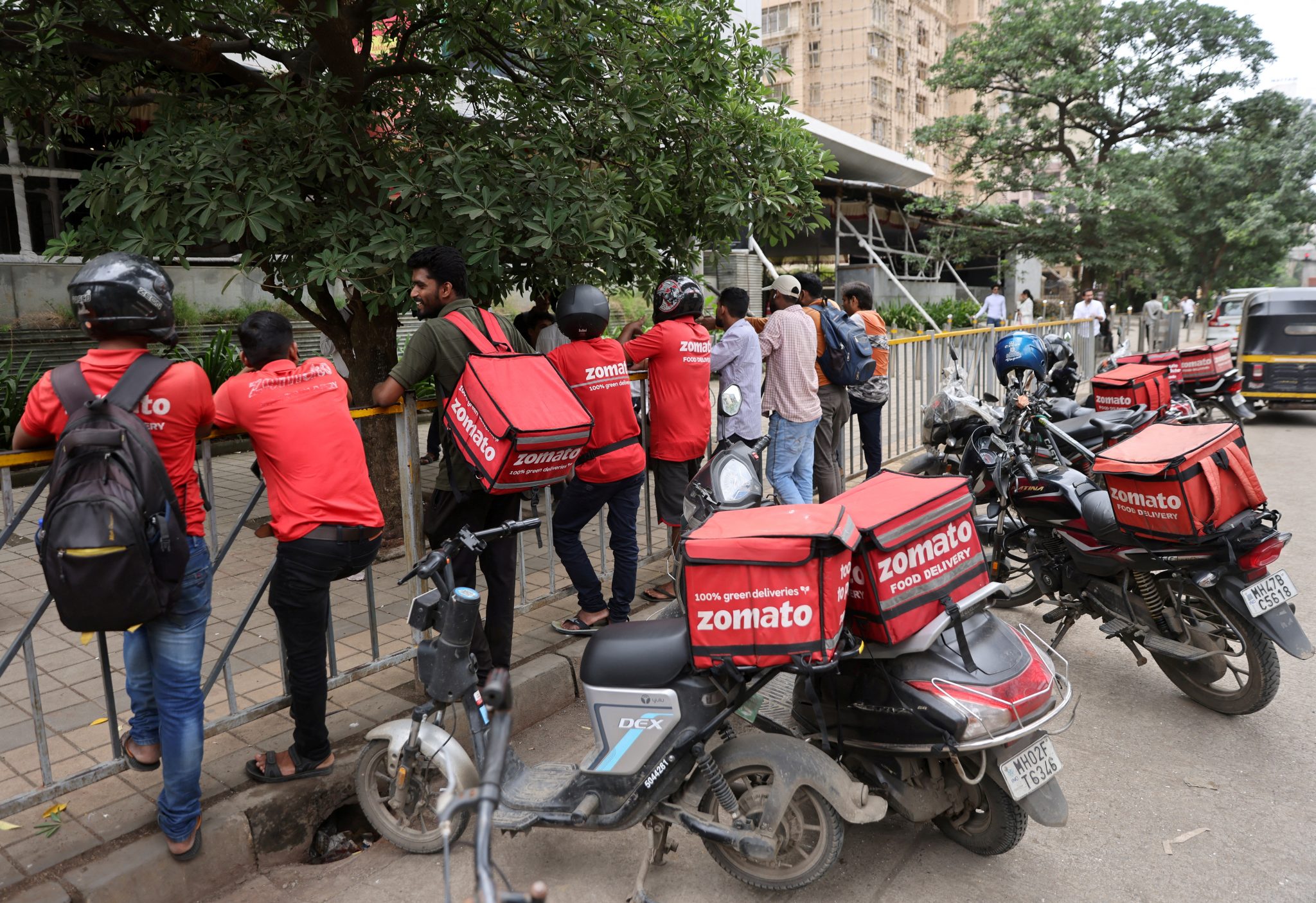- Courses
- GS Full Course 1 Year
- GS Full Course 2 Year
- GS Full Course 3 Year
- GS Full Course Till Selection
- Answer Alpha: Mains 2025 Mentorship
- MEP (Mains Enrichment Programme) Data, Facts
- Essay Target – 150+ Marks
- Online Program
- GS Recorded Course
- Polity
- Geography
- Economy
- Ancient, Medieval and Art & Culture AMAC
- Modern India, Post Independence & World History
- Environment
- Governance
- Science & Technology
- International Relations and Internal Security
- Disaster Management
- Ethics
- NCERT Current Affairs
- Indian Society and Social Issue
- NCERT- Science and Technology
- NCERT - Geography
- NCERT - Ancient History
- NCERT- World History
- NCERT Modern History
- CSAT
- 5 LAYERED ARJUNA Mentorship
- Public Administration Optional
- ABOUT US
- OUR TOPPERS
- TEST SERIES
- FREE STUDY MATERIAL
- VIDEOS
- CONTACT US
India’s Gig Workers: Working Everywhere, Counted Nowhere
India’s Gig Workers: Working Everywhere, Counted Nowhere

Why in the News?
- The Union Budget 2025 introduced several measures to formally recognise gig and platform workers, extending selected social protection schemes to this rapidly growing workforce.
- However, the Periodic Labour Force Survey (PLFS) 2025 has not been revised to reflect the unique nature of gig work, leaving significant gaps in official labour statistics.
- As per NITI Aayog’s 2022 report titled "India’s Booming Gig and Platform Economy", the gig workforce is projected to grow to 23.5 million by 2029-30.
- Despite such projections and legal recognition under the Code on Social Security, 2020, the PLFS continues to categorise gig workers under ambiguous classifications like self-employed, own-account workers, or casual labour.
- This statistical invisibility prevents an accurate understanding of their employment conditions and undermines policy planning and welfare delivery for the sector.
Key Highlights
- Legal Framework for Gig and Platform Workers
- Definition under Code on Social Security, 2020
- Gig Worker: Defined in Section 2(35) as someone earning outside a traditional employer-employee relationship.
- Platform Work: Involves using online platforms to solve problems or provide services without traditional employment ties.
- While distinguishing gig work from formal/informal categories, the law does not adequately define the specific nature of gig work
- Social Security Provisions
- Clause 141: Mandates the creation of a Social Security Fund for unorganised, gig, and platform workers.
- Section 6: Establishes a National Social Security Board to design and oversee welfare schemes for gig and platform workers.
- Definition under Code on Social Security, 2020
- Limitations of PLFS in Capturing Gig Work
- Absence of Specific Classification: PLFS clubs gig workers under broad categories like self-employed, own-account workers, and casual labour, erasing the unique attributes of gig work.
- Ignored Realities:
- Features like working across platforms, absence of contracts, task-based work, and algorithmic control are not reflected.
- “No written job contract” category fails to capture the hybrid nature of gig employment.
- Lack of Methodological Updates:
- The Ministry of Statistics acknowledged no updates were made to specifically capture gig work in PLFS.
- PLFS includes gig work under “economic activity” but fails to distinguish the digital, non-linear, and insecure nature of such jobs.
- Consequences of Misclassification
- Exclusion Despite Recognition:
- Workers are technically included but practically excluded from data visibility and targeted welfare due to poor classification.
- Data Deficiency Impacts:
- Inaccurate employment trends and job creation/loss estimates.
- Misguided policy decisions and weak welfare delivery.
- Boards relying on PLFS get incomplete and flattened insights, affecting evidence-based policymaking.
- Invisible Employment Realities:
- A gig worker juggling Swiggy and Zomato is misrepresented as “self-employed,” ignoring income instability and absence of safety nets.
- Exclusion Despite Recognition:
- Governance and Policy Gaps
- Disconnect Between Initiatives and Data:
- Initiatives like e-Shram registration, digital ID issuance, and Ayushman Bharat show government intent to support gig workers.
- However, without statistical reform, these initiatives risk uneven delivery and limited impact.
- PLFS 2025 Revisions—What Improved and What Didn't:
- Improvements: Larger sample size, monthly estimates, better rural coverage.
- Persistent Gap: No revision in classification codes to identify or track gig work specifically.
- Disconnect Between Initiatives and Data:
- Need for Statistical Reform
- Importance of Recognition with Representation:
- True inclusion requires gig workers to be distinctly captured in official labour data, reflecting their work conditions.
- Suggested Reforms:
- Update PLFS classification codes.
- Introduce dedicated survey modules for gig and platform work.
- Incorporate indicators like algorithm-based control, multi-app engagement, absence of contracts, and social security access.
- Importance of Recognition with Representation:
Challenges and Way Forward
|
Challenges |
Way Forward |
|
Gig work is wrongly clubbed under general categories |
Add a separate category for gig and platform workers in PLFS |
|
Digital and hybrid job patterns are ignored |
Redesign survey modules to capture multi-platform, task-based work |
|
Field staff lacks awareness about gig work complexities |
Train enumerators to accurately identify digital labour arrangements |
|
Fragmented data leads to under-informed decisions |
Integrate PLFS with e-Shram, Aadhaar, and other government databases |
|
Welfare decisions lack nuanced data |
Include gig worker representatives and economists in framing data categories |
Conclusion
While gig and platform workers are now being legally and socially recognised, they remain invisible in India’s labour data. Until surveys like PLFS adapt to changing work realities, policies will continue to miss large sections of the modern workforce. To ensure real inclusion and social protection, India must revise its labour statistics to accurately capture the gig economy.
|
Ensure IAS Mains Question Q. "Legal recognition of gig workers in India is not matched by their statistical representation." Examine the implications of this gap and suggest measures to make labour data more inclusive of the gig and platform economy. (250 words) |
|
Ensure IAS Prelims Question Q. With reference to the Periodic Labour Force Survey (PLFS) in India, consider the following statements:
Which of the above statements is/are correct?
Answer: b Explanation Statement 1 is incorrect: PLFS does not yet have a distinct classification for gig/platform workers. Statement 2 is correct: Gig workers are currently misclassified under broader categories like self-employed or casual labour. |




